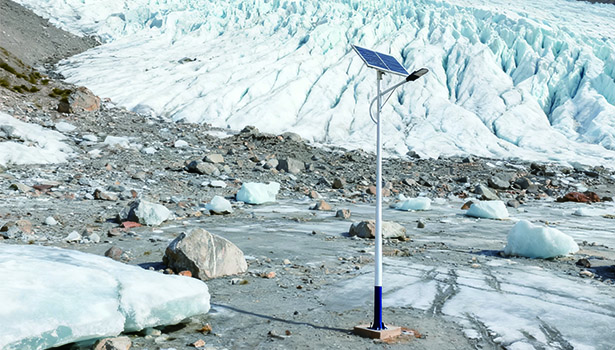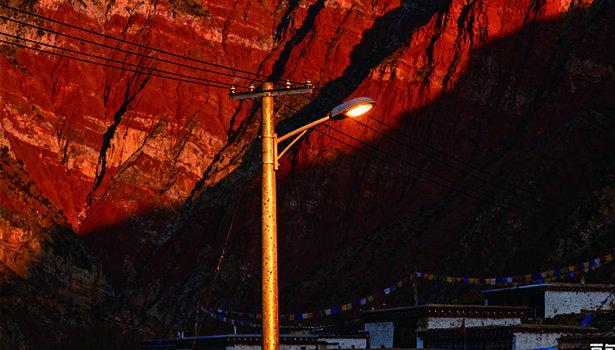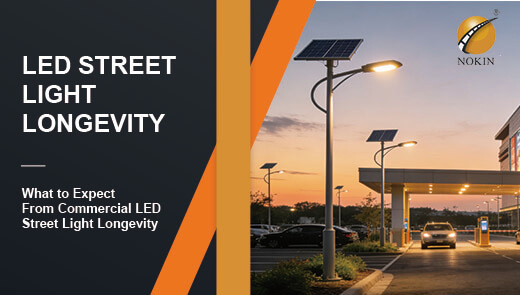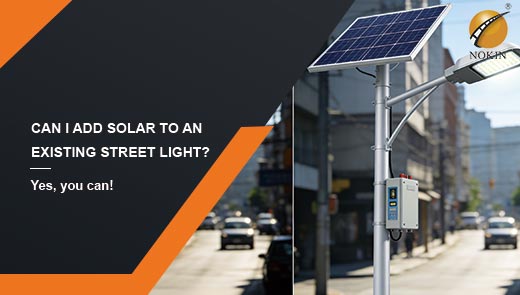Can Solar Street Lights Be Installed In High-Altitude Areas
As rural revitalization and infrastructure development in remote areas advance, the question “Can solar street lights be installed in high-altitude regions?” has become a central concern for many project contractors, purchasers, and local residents. Compared to traditional grid-connected street lights, solar street lights require no cable laying and are better suited for remote high-altitude areas. However, some worry that the unique environmental conditions at high altitudes—such as low temperatures, strong solar radiation, and high winds—may impair their performance. Some even believe that “high-altitude areas are unsuitable for solar street lights.” .
In reality, with the right product selection and tailored design, high-altitude regions can not only accommodate solar street lights but also fully leverage abundant local solar resources. This combines the energy-saving advantages of solar and LED lighting to achieve long-term, stable illumination.

Advantages of Installing Solar Street Lights at High Altitudes
First, we must dispel the misconception that “high altitudes cannot accommodate solar street lights.” From the perspectives of resource conditions and product adaptability, high-altitude regions actually possess natural advantages for developing solar lighting. Compared to traditional street lights, solar street lights demonstrate more pronounced benefits, specifically in the following two aspects:
Solar Resources Align with LED Low Power Consumption
High-altitude regions typically refer to areas above 1,500 meters, characterized by thin air and sparse cloud cover. Here, atmospheric attenuation of solar radiation is significantly lower than in low-altitude areas. Data indicates that solar radiation intensity increases by approximately 10%-15% for every 1,000-meter elevation gain. Annual sunshine hours generally exceed 2,500 hours, with some areas on the Qinghai-Tibet Plateau reaching 3,000-3,500 hours—far surpassing plains regions. Solar street lights' photovoltaic panels absorb more light energy for conversion into electricity. Combined with LED street lights' inherent low power consumption and high brightness, this pairing maximizes energy utilization. Even during winter's shorter daylight hours, it ensures stable 8-10 hours of nightly illumination with ample power reserves.
Policy Support
In recent years, the national government has introduced multiple supportive policies for infrastructure development in remote, high-altitude regions. As a “zero-carbon emission, grid-independent” green lighting solution, solar street lights eliminate the need for long-distance cable laying required by traditional street lights. This significantly reduces construction complexity and costs in high-altitude mountainous areas, leading to their widespread adoption in rural roadways, pastoral zones, scenic areas, and other development projects.
Concurrently, the industry has developed specialized solar street light components tailored for high-altitude environments. From photovoltaic panels and batteries to controllers, these components withstand challenges like low temperatures and strong winds. Paired with energy-efficient LED street lights, the overall technological maturity has significantly improved.
Three Major Challenges in High-Altitude Solar Street Light Installation and Their Solutions
While high-altitude regions are suitable for solar street lights and achieving energy-efficient lighting with LED lamps, the unique natural environment still impacts the performance of solar LED street lights. The following three core issues require targeted solutions:
Low Temperatures Affect Batteries
Winter temperatures in high-altitude areas often drop below -10°C, with some regions reaching as low as -30°C. Conventional lead-acid batteries experience “capacity plunge” in such cold conditions—for instance, capacity drops to just 50% of normal levels at -20°C. Repeated charging/discharging cycles can cause plate freezing and cracking, shortening battery life from 3-5 years to 1-2 years. This leads to reduced brightness and premature shutdown of LED lights due to insufficient power.
To address this issue, solutions must focus on three aspects: battery selection, thermal insulation design, and controller adaptation. Prioritize low-temperature lithium batteries, such as lithium iron phosphate batteries, which significantly outperform lead-acid batteries in cold conditions. They maintain over 80% capacity at -20°C and remain fully functional at -40°C, ensuring stable power supply for LED street lights.
Concurrently, implement thermal insulation for the battery system. Wrap the battery enclosure with flame-retardant insulation cotton or opt for underground installation, where temperatures remain 5-10°C higher than ground level to mitigate direct cold exposure. Additionally, integrate low-temperature charging protection controllers. When battery temperatures drop below 0°C, these controllers automatically activate preheating functions to maintain charging efficiency and guarantee stable power supply for LED street lights.

Strong UV Rays Accelerate Component Aging
UV intensity at high altitudes is 2-3 times that at lower elevations. Prolonged exposure causes the light transmittance of solar panel tempered glass to decrease and the back sheet to age and crack. Simultaneously, components like lamp poles and LED street light covers may fade and become brittle due to UV radiation. This not only reduces the power generation efficiency of solar panels but also shortens the lifespan of LED street lights.
To address this, photovoltaic panels should utilize high-UV-resistant coated glass. The coating layer blocks over 90% of harmful UV rays while enhancing light transmittance to over 94%, ensuring sufficient power supply for LED street lights. The photovoltaic panel back sheet should utilize weather-resistant PVDF material, which offers 3-5 times greater resistance to UV aging than standard materials, ensuring the back sheet remains crack-free over extended periods. The lamp poles of LED street lights employ hot-dip galvanization + electrostatic powder coating. The powder coating layer utilizes UV-resistant powder, while the lampshades are made of UV-resistant PC material. These designs effectively resist UV erosion, extending the overall appearance and structural lifespan of solar LED street lights.
Severe Storms and Snow Damage
High-altitude regions feature mountainous terrain and valleys, where wind speeds frequently reach force 6-8. Winter snowstorms can accumulate on photovoltaic panels, causing component deformation under pressure. In extreme cases, excessive snow weight may collapse the light pole, leading to equipment failure, broken circuits, and complete system shutdown.
To address this challenge, light pole designs must comply with local wind load standards. For instance, in areas with wind speeds ≥12m/s, pole wall thickness must be ≥3.5mm. Reinforced flange plates are used for secure mounting, with anchor bolts of M24 or larger specifications buried at least 1.2 meters deep. In soft soil, burial depth must be increased to 1.5 meters to ensure the pole sturdily supports both the photovoltaic panels and LED street lights.
The photovoltaic panel brackets employ a triangular stabilizing structure made of Q235 galvanized steel. Reinforcing ribs are added at the connection points with the light pole to ensure wind resistance exceeding Grade 12. The tilt angle of the photovoltaic panels must balance “power generation efficiency” and “snow accumulation prevention.” Typically, the tilt angle should exceed the local latitude by 5-10°, such as setting it to 35-40° in a 30°N latitude region. This facilitates natural snow sliding, preventing heavy snow accumulation from damaging the components and ensuring the normal operation of solar LED street lights.
5 Key Considerations for Selecting Solar LED Street Lights in High-Altitude Regions
When selecting solar street lights for high-altitude areas, the core focus is on matching compatible solar panels with LED street light systems. Beyond standard parameters like LED power, brightness, and runtime, prioritize verifying these 5 critical metrics to avoid increased maintenance costs from improper selection:
Verify Battery Low-Temperature Performance
Require suppliers to provide the battery's “low-temperature capacity curve,” clearly marked with capacity variation data across different cold environments. Specifically confirm capacity retention rates at -20°C and -30°C. Avoid suppliers substituting ambient temperature capacity parameters for low-temperature data—such as using 25°C capacity figures to mask inadequate cold performance—which can lead to brightness degradation or premature shutdown due to insufficient power during actual use. For extreme cold regions—such as areas above 4,000 meters elevation where winter temperatures frequently drop below -30°C—additionally request third-party low-temperature performance test reports from suppliers to ensure data authenticity and reliability.

Verify Photovoltaic Panel UV Resistance Rating
Review the photovoltaic panel's “PID Deterioration Test Report.” PID (Potential Induced Deterioration) is primarily caused by ultraviolet radiation. The report must clearly state test results under simulated high-altitude, high-UV conditions. For instance, when UV intensity ≥100W/m², the degradation rate after 1000 hours of aging testing should be ≤2%/year. This ensures long-term power generation efficiency to meet LED street light power requirements.
Additionally, inspect the glass surface of the photovoltaic panels. High-quality products feature a uniform coating layer, typically appearing pale blue or pale purple, free of scratches and bubbles. This coating layer effectively enhances UV resistance, preventing rapid decline in light transmittance that could compromise power supply performance over time.
Require Submission of Wind Load Calculation Documents
First, obtain the maximum wind speed data for the past 10 years from the local meteorological department. In high-altitude mountainous areas, maximum wind speeds often reach 15-20 m/s. Then, instruct the manufacturer to prepare wind load stress calculation documents for the light poles and brackets based on this data. The calculation report must include: - Stress analysis at various wind speeds - Rationale for pole wall thickness and material selection - Strength verification of bracket connection points This ensures the pole securely supports the solar panel and LED light, preventing bending or collapse during extreme winds while maintaining stable bracket-to-pole connections. If the manufacturer cannot provide the calculation report or the data is unclear, exercise caution to avoid equipment damage caused by “overloading the system.”
Prioritize High-Altitude Specialized Solar LED Street Light Kits
Reputable manufacturers offer high-altitude-specific solar LED street light kits where photovoltaic panels, batteries, controllers, and LED lights undergo comprehensive compatibility testing. For instance, panels endure -40°C to 85°C temperature cycling tests, batteries undergo -30°C low-temperature charge/discharge cycles, and LED lights pass cold-start tests—ensuring stable operation in extreme high-altitude environments.
When selecting products, distinguish between “specialized kits” and “standard component assemblies.” Assemblies often combine ordinary solar components with LED lights without undergoing low-temperature or high-UV adaptation testing, leading to performance failures over time. Request manufacturers to provide comprehensive test reports and certification documents for specialized kits to verify compliance.
Confirm After-Sales Service Coverage
Transportation is challenging in high-altitude regions with rugged mountain roads. If solar LED street lights experience issues like damaged photovoltaic panels or burnt-out LED chips, prolonged outages may occur if manufacturers cannot provide timely on-site repairs, disrupting normal lighting. When selecting products, verify whether the manufacturer has service centers in the project location or nearby cities. Confirm these centers are equipped with professional technicians and common spare parts, such as backup LED chips and photovoltaic panel connectors.
Simultaneously, clarify after-sales service commitments, such as whether on-site repairs are provided within 48 hours, if batteries carry a warranty exceeding 3 years, and if LED street lights have a warranty exceeding 2 years. For remote areas, negotiate with the manufacturer to reserve a certain quantity of spare components for rapid replacement during emergencies, minimizing downtime.
High-altitude regions can not only install solar street lights but also achieve efficient, energy-saving illumination by pairing them with LED street lights, leveraging abundant solar resources. To address challenges like low temperatures, intense UV radiation, and strong winds, select specialized solar LED street light kits designed for high-altitude environments. Ensure thorough product verification during procurement and maintain rigorous post-installation maintenance protocols.




